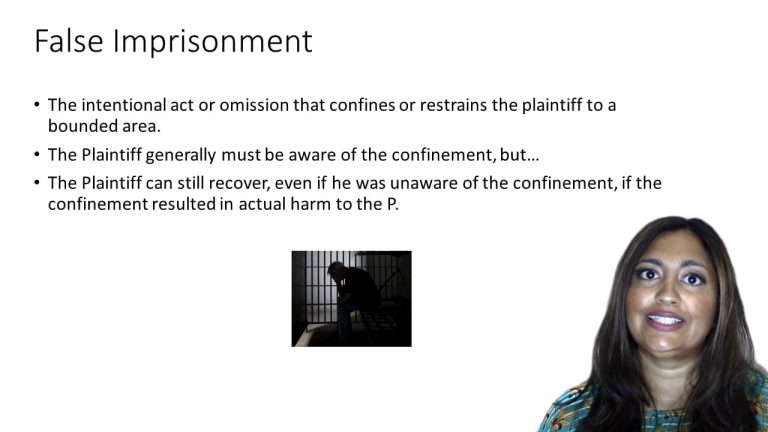SmartBrief
Confirm favorite deletion?
Torts Keyed to Prosser
Bonkowski v. Arlan’s Department Store
Citation:
12 Mich. App. 86, 162 N.W.2d 347Facts
Ms. Bonkowski went shopping one evening at Arlan’s Department Store with her husband. She left the store after making several purchases. Earl Reinhardt, a private policeman on duty that evening at the store suspected Ms. Bonkowski of having committed larceny. Reinhardt requested Ms. Bonkowski reveal the contents of her purse so he could search for the allegedly stolen costume jewelry. Ms. Bonkowski emptied the contents of her purse and showed Reinhardt the sales receipts for the items she purchased. Satisfied that Ms. Bonkowski did not commit larceny, Reinhardt permitted her to leave. Ms. Bonkowski sued the store for false arrest and slander.
Only StudyBuddy Pro offers the complete Case Brief Anatomy*
Access the most important case brief elements for optimal case understanding.
*Case Brief Anatomy includes: Brief Prologue, Complete Case Brief, Brief Epilogue
- The Brief Prologue provides necessary case brief introductory information and includes:
Topic:
Identifies the topic of law and where this case fits within your course outline.Parties:
Identifies the cast of characters involved in the case.Procedural Posture & History:
Shares the case history with how lower courts have ruled on the matter.Case Key Terms, Acts, Doctrines, etc.:
A case specific Legal Term Dictionary.Case Doctrines, Acts, Statutes, Amendments and Treatises:
Identifies and Defines Legal Authority used in this case.
- The Case Brief is the complete case summarized and authored in the traditional Law School I.R.A.C. format. The Pro case brief includes:
Brief Facts:
A Synopsis of the Facts of the case.Rule of Law:
Identifies the Legal Principle the Court used in deciding the case.Facts:
What are the factual circumstances that gave rise to the civil or criminal case? What is the relationship of the Parties that are involved in the case.Issue(s):
Lists the Questions of Law that are raised by the Facts of the case.Holding:
Shares the Court's answer to the legal questions raised in the issue.Concurring / Dissenting Opinions:
Includes valuable concurring or dissenting opinions and their key points.Reasoning and Analysis:
Identifies the chain of argument(s) which led the judges to rule as they did.
- The Brief Prologue closes the case brief with important forward-looking discussion and includes:
Policy:
Identifies the Policy if any that has been established by the case.Court Direction:
Shares where the Court went from here for this case.
Topic Resources

 5m 53s
5m 53s